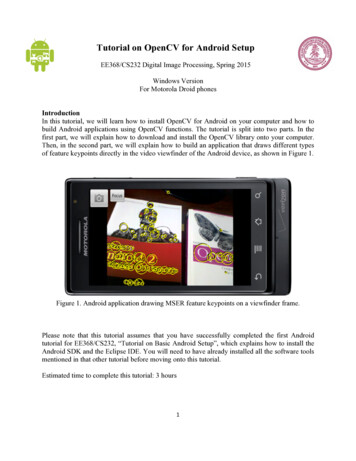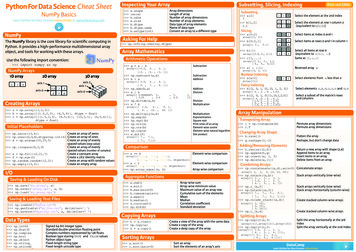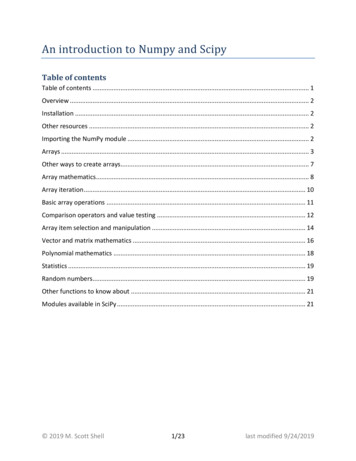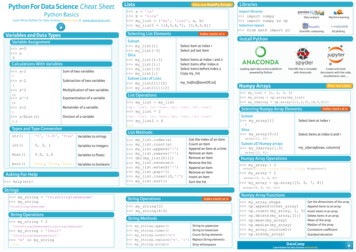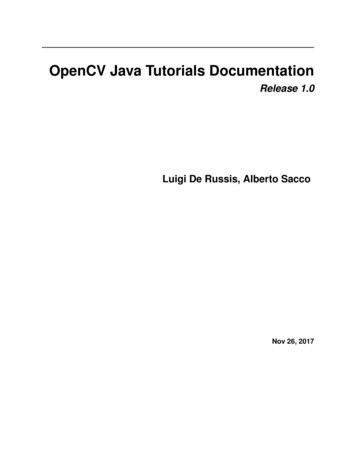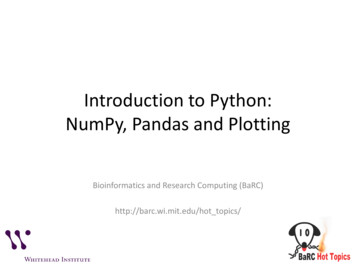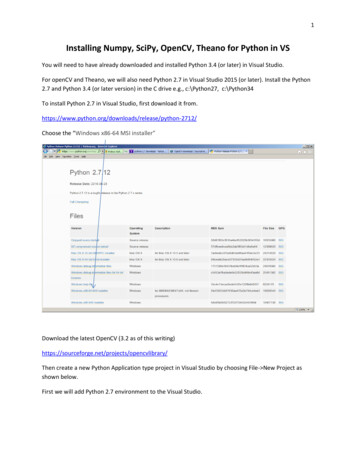
Transcription
1Installing Numpy, SciPy, OpenCV, Theano for Python in VSYou will need to have already downloaded and installed Python 3.4 (or later) in Visual Studio.For openCV and Theano, we will also need Python 2.7 in Visual Studio 2015 (or later). Install the Python2.7 and Python 3.4 (or later version) in the C drive e.g., c:\Python27, c:\Python34To install Python 2.7 in Visual Studio, first download it on-2712/Choose the “Windows x86-64 MSI installer”Download the latest OpenCV (3.2 as of this rary/Then create a new Python Application type project in Visual Studio by choosing File- New Project asshown below.First we will add Python 2.7 environment to the Visual Studio.
2Click on the Python Environments tab (right side of visual studio)Then click on the custom tab to add Python 2.7 environment as shown below.
3Then set the Python 2.7 as the default environment by clicking on the “Make this the defaultenvironment for new projects” as shown below.Now we need to install numpy, and scipy.
4To install numpy, select pip from the dropdown for Python Environment, then type numpy and click onthe “install numpy from PyPI” as shown below.Similarly search for scipy and install it using pip. If you get any errors in installing scipy, then downloadfirst anaconda from the following site.https://www.continuum.io/downloadsI chose the Python 2.7 64 bit installer. Once Anaconda is installed (It will most likely get installed inc:\Program Files\Anaconda2 folder).To install scipy, launch command prompt and move to the anaconda2 install folder and type thefollowing command.This will end up installing scipy correctly in your Python environment.If it still does not show up in the list of packages installed, then use pip to install it one more time. Now ifyou check the Visual Studio solution explorer tab, and expand on the Python 64-bit 2.7, you will see thescipy installed for your environment as shown below.
5Now using pip again (from the Python Environments), search for opencv-python and install it for yourenvironment by clicking on the “pip install opencv-python from PYPI” as shown below.To test if opencv has been correctly installed, type the following code in the openCVTest.py file.import numpy as npimport cv2# Load a color image in grayscaleimg cv2.imread('d:/images/obama1.jpg',0)
llWindows()Run the program, your output will appear as:You can also use Python3.4 or higher to run opencv. Using pip, add the numpy and scipy libraries to thePython 3.4 environment in Visual Studio. First, you will have to set the default environment to Python3.4 as shown below.Then using pip install the numpy and scipy as you did for the Python 2.7 environment. Then run theproject again, and it should work same way as under Python 3.4 (or higher)Installing Theano:For installing theano, the best approach is to use anaconda that you used earlier to install scipy.First type the following command in the command prompt once you are in the install folder ofanaconda2.conda install mingw libpythonOnce above completes, then type the following command form anaconda2conda install -c conda-forge theano 0.8.2Then from visual studio, use pip to search for theano and install it.
7https://git-scm.com/download/winC:\Program Files (x86)\Microsoft Visual Studio 14.0\Common7\IDE\devenv.exe\resetsettingsTesting if Theano is Correctly Installed:
Python 3.4 environment in Visual Studio. First, you will have to set the default environment to Python 3.4 as shown below. Then using pip install the numpy and scipy as you did for the Python 2.7 environment. Then run the project again, and it should work same way as under Python 3.4 (or higher) Installing Theano:

